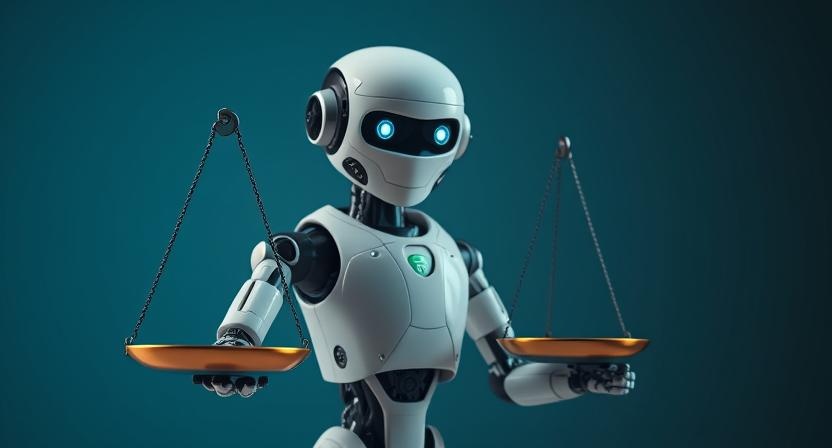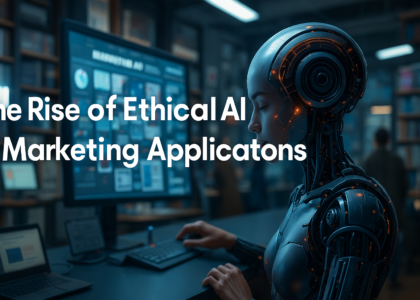Artificial intelligence (AI) has revolutionized content creation, assisting businesses, researchers, and individuals in producing vast amounts of information quickly. However, AI-generated content often inherits biases from the data it is trained on, leading to unfair, misleading, or discriminatory outputs.
To ensure that AI-generated content is fair, accurate, and ethical, it is crucial to identify the sources of bias and apply strategies to minimize their effects. This article provides a deep dive into the causes of AI bias, real-world examples, and actionable strategies to mitigate bias in AI-generated content.
Understanding Bias in AI Content
1. What is AI Bias?
AI bias refers to systematic and unfair favoritism in the outcomes generated by artificial intelligence models. These biases often arise because AI systems learn from historical data, cultural patterns, and human decisions, all of which may contain prejudices.
Bias can manifest in different ways, such as gender discrimination, racial bias, and political bias, potentially leading to unethical or misleading outputs. Since AI lacks human reasoning, it does not inherently understand fairness and can replicate biases unknowingly.
2. Common Types of Bias in AI Content
- Data Bias: AI models are trained on large datasets that may not be fully representative of diverse perspectives. If the dataset lacks inclusive and balanced information, the AI system may produce biased outputs.
- Algorithmic Bias: The design and optimization of AI algorithms can inadvertently favor certain groups or viewpoints over others, leading to biased decision-making.
- Confirmation Bias: AI models often reinforce existing opinions rather than presenting a wide range of perspectives, limiting users’ exposure to alternative viewpoints.
- Exclusion Bias: Some groups (e.g., minorities, marginalized communities) may be underrepresented in the dataset, leading to their perspectives being excluded from AI-generated content.
3. Real-World Examples of AI Bias
AI bias is not just theoretical—it has real-world consequences. Some of the most well-known cases include:
- Facial Recognition Bias: Studies have found that AI-driven facial recognition systems have higher error rates for people of color, leading to false identifications and discrimination.
- Gender Bias in AI Hiring Tools: AI models used for recruitment have been found to favor male applicants over female applicants due to historical biases in hiring data.
- Search Engine Bias: Search engines can rank biased or misleading content higher, reinforcing societal stereotypes or political ideologies.
- AI Chatbot Controversies: Several AI chatbots have produced racist, sexist, or offensive responses because they learned from biased internet conversations.

How Bias Enters AI Models
1. Bias in Training Data
AI models require massive amounts of data to learn and generate responses. However, if this data reflects historical injustices, cultural prejudices, or incomplete information, the AI will inherit and amplify these biases.
For example:
- If an AI model is trained only on Western news sources, it may overlook non-Western perspectives.
- A model trained on biased hiring data may unknowingly favor white or male candidates.
- If a language model is trained on historically biased literature, it may replicate outdated stereotypes.
2. Human Bias in AI Development
Developers play a crucial role in AI training, but they are not immune to unconscious biases. The way developers select training data, set objectives, and design algorithms can introduce unintentional discrimination into the AI system.
For instance:
- Developers may overlook underrepresented groups when choosing datasets.
- AI algorithms might be optimized for efficiency over fairness, prioritizing speed and cost over ethical considerations.
3. Lack of Diversity in AI Research & Testing
Many AI research and development teams lack diverse representation, leading to oversight in detecting biases that affect different demographic groups.
For example:
- An AI system tested primarily on English speakers may not function well for non-native speakers.
- AI designed in male-dominated tech industries may struggle to detect gender biases.

Strategies to Overcome Bias in AI Content
1. Improving Data Collection and Curation
- Diversify Training Data: Ensure AI models are trained on inclusive, representative datasets that capture perspectives from different cultures, genders, and backgrounds.
- Regularly Update Datasets: Social norms and knowledge evolve over time. AI models should be updated periodically to reflect current values and avoid outdated biases.
- Remove Harmful Content: AI datasets should be filtered to remove historical injustices, offensive language, and misleading information.
2. Algorithmic Fairness and Transparency
- Use Bias Detection Tools: AI fairness tools like IBM’s AI Fairness 360, Google’s What-If Tool, and Microsoft’s Fairlearn can help detect and correct biases in AI models.
- Explainable AI (XAI): AI systems should be designed to explain their decisions so developers can audit and improve fairness.
- Apply Fairness Constraints: Some AI models can be trained with specific constraints to balance representation across gender, race, and cultural groups.
3. Human Oversight and Ethical Guidelines
- AI-generated content should always be reviewed by human experts to identify potential biases before publication.
- Organizations should establish AI ethics teams to monitor and address bias-related issues.
- Developers should follow industry standards like the EU AI Act, IEEE AI Ethics Guidelines, and OpenAI’s AI Safety Policies.
4. Regular Audits and Bias Testing
- Conduct independent audits to evaluate AI bias and implement corrections.
- Use adversarial testing to simulate diverse user interactions and identify unfair outputs.
5. Increasing Diversity in AI Development
- Inclusive Hiring: AI development teams should include women, minorities, and people from various cultural backgrounds to bring diverse perspectives.
- Cross-Disciplinary Collaboration: AI should be developed with input from ethicists, sociologists, and human rights experts.

The Role of Regulation and Policy
1. Government Regulations and Ethical Standards
Governments are introducing AI regulations to hold companies accountable for biased AI systems. These include:
- The European Union AI Act – Proposes strict AI ethics guidelines.
- The Algorithmic Accountability Act (USA) – Requires companies to audit AI systems for fairness.
2. Corporate Responsibility in AI Ethics
- Companies should publicly disclose how AI models are trained and what steps are taken to prevent bias.
- AI governance frameworks should ensure fairness, transparency, and accountability.
3. Public Awareness and Media Literacy
- Users should be educated on AI bias and misinformation to develop critical thinking skills.
- Schools and organizations should integrate AI literacy programs to help people understand how AI-generated content is formed.
Conclusion
AI bias is a major challenge, but proactive strategies can help create fairer and more ethical AI systems. By focusing on diverse data collection, algorithmic transparency, human oversight, and government regulations, we can minimize bias and ensure AI serves everyone equitably.
As AI continues to evolve, ongoing monitoring, testing, and ethical considerations will be necessary to build trustworthy AI that benefits all users.





